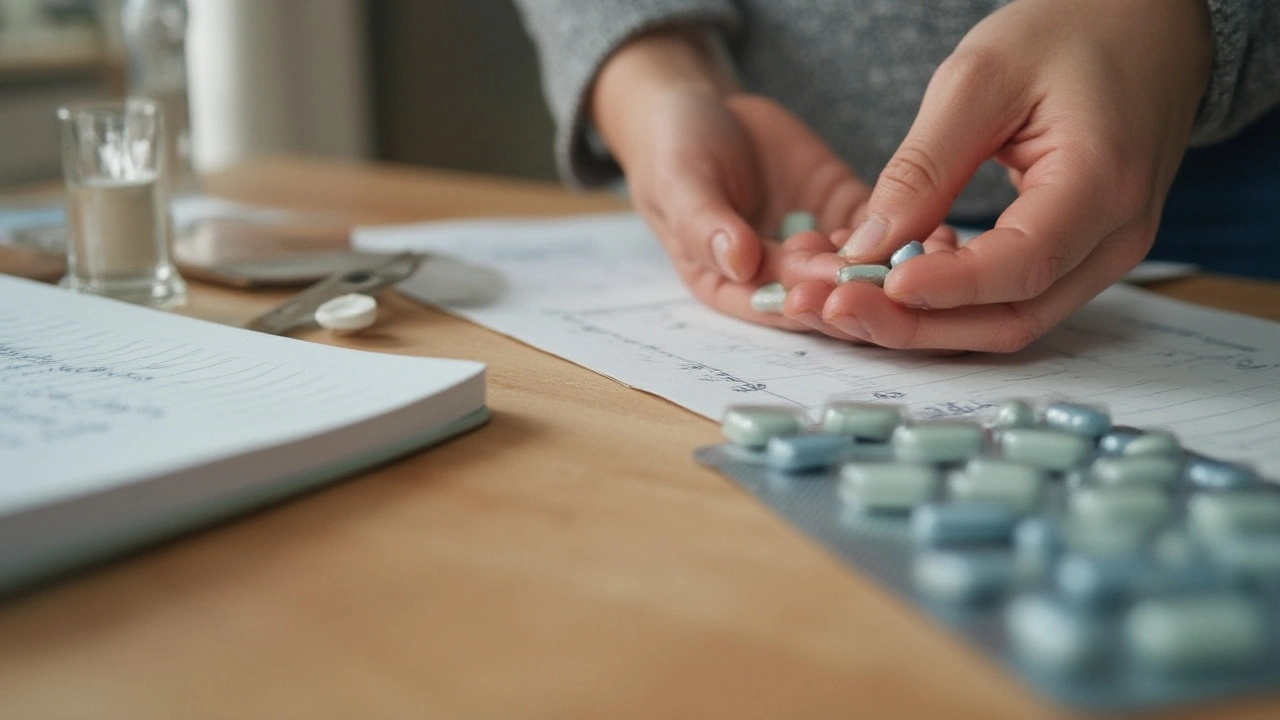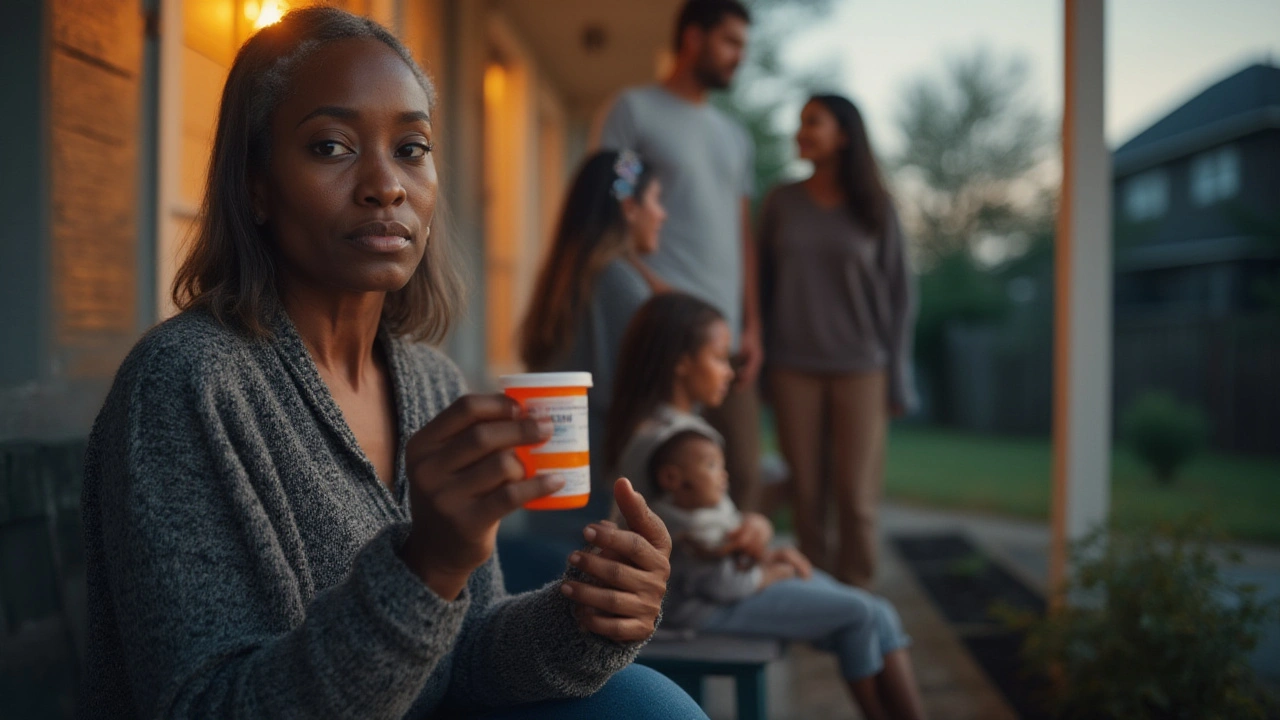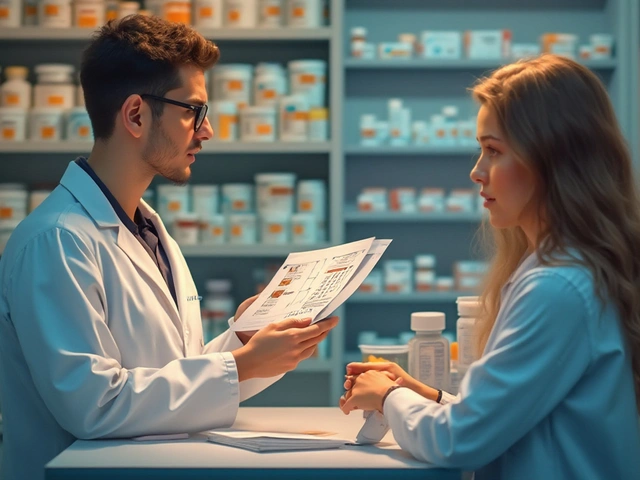It’s strange but true—some of the most powerful medicines have stories that sound like science fiction. Hydrea, known generically as hydroxyurea, is a tiny capsule that can make a massive difference in people’s lives. It’s not flashy. In fact, it looks pretty ordinary. What sets it apart is what it can do inside your body, whether you’re fighting a cancer diagnosis or trying to manage sickle cell anemia. Hydrea’s history goes back more than 50 years. In that time, it’s helped a mind-boggling range of people. So why are so many patients and even doctors careful around it? Let’s pull the curtain back and get into the weird mix of hope, risks, and facts surrounding this medication.
What is Hydrea and How Does It Work?
Hydrea belongs to a class of drugs called antimetabolites. But don’t let the word trip you up. Basically, it messes with how cells copy themselves. Here's the deal: cells in our body divide to make new cells. Some do this a lot, like cancer cells or the sickle-shaped red blood cells seen in sickle cell disease. Hydrea slips in and gets in the way of DNA synthesis—the exact step cells need to divide and multiply. This slows down the wild growth of cancer cells. That’s pretty smart, right? And this action isn’t too picky. It targets any rapidly dividing cells, which is why doctors also watch for side effects hitting healthy fast-growing cells.
Dig deeper, and you find that Hydrea is most famous for two things: treating certain cancers (like chronic myeloid leukemia and head and neck cancers) and changing the game for sickle cell anemia patients. Weird fact: It was first synthesized in 1869 but didn't get major medical traction until nearly a century later. Besides cancer and sickle cell, doctors use it as a "jackknife" drug for rare blood disorders like polycythemia vera. It’s taken orally, so no scary needles—just a capsule, usually once a day. Doesn’t get more convenient than that.
So, what makes Hydrea a go-to? It’s affordability, the fact that it’s well-studied, and surprisingly manageable if you follow doctor’s orders. One big study published by the New England Journal of Medicine in the 1990s showed up to a 44% reduction in painful sickle cell crises for patients who stuck with it. Plus, the Food and Drug Administration gave it approval way back in 1967—a real mark of trust. But as with every medicine, it’s no magic bullet. It comes with side effects, interactions, and sometimes it just doesn’t work for everyone. Down this rabbit hole, you’ll see why smart planning and honest talks with your doc are key.
Why is Hydrea Prescribed? Real-World Uses
If you’ve just been handed a Hydrea prescription, you might be nervous or confused. Why this drug? Why now? Well, first off, Hydrea isn’t one of those grab-anywhere meds. It’s given to people with specific needs. Here’s how it breaks down in real life.
First up: Hydrea is a front-line treatment for some tricky cancers. Think chronic myeloid leukemia, a slow-growing cancer that affects the white blood cells. Hydrea helps by hitting those out-of-control cells hard, throttling down their ability to grow unchecked. In head and neck cancers, it can be used solo or teamed up with radiation therapy. Studies (like the one from the Radiation Therapy Oncology Group) found that blending Hydrea with radiation offered improved control of aggressive tumors over radiation alone for certain patient groups.
Then there’s sickle cell anemia, where Hydrea genuinely changes lives. Sickle cell is not just pain, but a storm of complications: infections, hospital visits, even strokes in children. This little capsule actually stimulates the production of fetal hemoglobin—the “baby version” of hemoglobin that sickling can’t touch. More fetal hemoglobin means fewer sickle-shaped cells clogging up blood vessels. Based on research from the Multicenter Study of Hydroxyurea in Sickle Cell Anemia, most patients see fewer hospitalizations and less pain after a few months of steady dosing.
Hydrea’s not only for adults either. Since the 1990s, doctors have carefully used it in children with sickle cell, usually after age two, and it’s proven safe with regular monitoring. Oddly, in rare bone marrow diseases like polycythemia vera and essential thrombocythemia, Hydrea helps by dropping blood cell counts down to safer levels, lowering the risk of clots, strokes, and bleeding.
Quick side note: Hydrea’s use has a clear strategy. Docs monitor blood counts every 2-4 weeks, adjust doses up or down, and watch for side effects. It’s not the sort of medicine where you can go rogue or “just try a capsule.” The monitoring isn’t busywork—it really can catch trouble before it starts. This careful approach has led to Hydrea’s spot on the World Health Organization’s List of Essential Medicines. Pretty exclusive club.
| Disease/Disorder | Hydrea's Main Benefit | Typical Success Rate (studies) |
|---|---|---|
| Chronic Myeloid Leukemia (CML) | Reduces abnormal white cell counts | 60-90% initial response |
| Sickle Cell Anemia | Lowers pain episodes, increases fetal hemoglobin | 40-60% less pain crises |
| Polycythemia Vera | Decreases blood viscosity (thickness) | 70% reach blood count targets |

Common and Rare Side Effects: What to Expect
Every medication has downsides. Hydrea’s big risk is that it doesn’t just stop dangerous cell growth—it can also slow down healthy cell division. So, what does that look like? The most common side effects start with blood count drops: white cells, red cells, and platelets can all fall after a week or two. This can make you a bit more prone to infections, more tired, or more likely to bruise or bleed.
Another classic problem? Mouth sores. They’re annoying and sometimes painful, but usually reverse once the dose is tweaked. Nausea, mild vomiting, and poor appetite make the list, but most people find those manageable with good timing and food choices. If you sunburn easily, be warned: Hydrea can make your skin super-sensitive to sunlight. Slap on SPF 50 if you’re heading out, especially if you have fair skin.
Rare side effects do happen. Some people might see skin peeling, darkening of nails, or hair loss at higher doses. Long-term use (we’re talking years, not months) may heighten your risk for skin cancer. That’s one of the big trade-offs—Hydrea keeps you alive and healthier now, but maybe adds risks decades later. For those with sickle cell anemia, though, the immediate benefits often outweigh long-term possible dangers.
Liver and kidney issues have popped up, mostly in people who already had those conditions before starting Hydrea. It’s why regular blood tests are non-negotiable. Doctors sometimes see leg ulcers after years on therapy, mostly in older adults. Not fun, but rare.
Here’s an overlooked fact: men taking Hydrea for long periods may have reduced fertility. That’s tough news if you still want kids. Sperm counts may recover if you stop, but not always. Women should avoid pregnancy while taking Hydrea. Animal studies have linked it to birth defects, so most docs will suggest birth control and will stop Hydrea if you become pregnant.
Bottom line—Hydrea is powerful, but its risks are mostly manageable with careful blood work and check-ins. Most patients can avoid serious trouble with some common sense and regular monitoring. If you have old wounds or odd skin changes, don’t wait and hope they’ll “just go away.” Bring it up fast. The sooner, the better.
Dosage and Monitoring: Staying Safe and Getting Results
The trickiest part of Hydrea is sticking to the right dose. Too low, and you won’t get much bang for your buck. Too high, and side effects knock you out. Doctors usually start you with a conservative dose—around 15-20 mg per kilogram of body weight per day. For sickle cell anemia, most adults start at 15 mg/kg/day. Kids use a similar formula, adjusted for their smaller size. Cancer patients sometimes need higher doses, so the numbers can jump.
But here’s where it gets personal: everyone’s body handles Hydrea a little differently. Some people’s marrow is sensitive; others tolerate more. That’s why, each month (sometimes more often in the first months), you’ll get full blood counts. If your white cell count or platelets drop too low, your doctor orders a break or cuts the dose. This can be annoying, sure, but it keeps you safe. If things look stable after a few months, monitoring may space out a bit. But most folks never really “graduate” from check-ins—it’s part of the deal.
You’ll swallow your Hydrea capsules whole, usually once a day, food or no food. But here’s a useful tip: if you get queasy, try it with breakfast. Some people take it at night to dodge daytime side effects. Never cut or crush Hydrea capsules, since the powder inside can irritate your mouth and throat, or even your skin if spilled. If you must handle broken capsules (which is rare), wear gloves and wash your hands thoroughly.
Miss a dose? Take it as soon as you remember, unless you’re close to the next day—then just skip. Never double up. Overdosing can send your blood counts plunging in a hurry. Report any fever, sore throat, easy bruising, or red spots to your doc immediately. Even if you feel “fine,” side effects sometimes creep up before you notice symptoms. That’s why those blood tests matter so much—even when you’re feeling tip-top.
- Start with doctor’s instructions for first dose and increase only if counts are healthy.
- Plan regular lab visits—set reminders on your phone.
- Avoid handling broken capsules with bare skin.
- Stay hydrated. Hydrea can dehydrate you faster, especially in summer.
- Wear sunscreen and protective clothing if you’re outside longer than 15 minutes.
One last thing: Hydrea doesn’t mix well with some meds. Antiretrovirals, certain antivirals, and live vaccines are big no-gos. Always give your full med list to every doctor, not just the specialist.

Patient Tips: Making Hydrea Work for You
Nobody wants to add “taking medicine” to their daily life. But with Hydrea, there are practical hacks that make things smoother. Start by keeping a log—old-school notebook or a phone app—and jot down when you take your pill, how you feel, and when lab appointments are. Patterns jump out fast. If you start getting headaches after your dose, you’ll spot a trend you can bring up at check-ins.
Set up a support system. This doesn’t mean shouting from the rooftops but have at least one person who knows your schedule and what to do in an emergency. Hydrea doesn’t stop you from traveling, working, or doing hobbies, but have a plan for taking meds with you. The capsules are portable, no refrigeration needed, but don’t store them in a hot car or humid bathroom.
Power tip: If you have toddlers or pets, keep Hydrea locked up. It looks harmless enough, but just one tablet can cause serious harm if swallowed by the wrong person. Make a routine—always take it at the same time daily, and link it to a habit (first coffee, brushing teeth, etc.).
Hydrea can sometimes make you thirsty or leave you with a dry mouth. Keep a water bottle handy, and chew sugarless gum if it bothers you. Mouth sores are common, so stick to gentle toothpastes and skip spicy or citrusy foods if you notice tender spots. If your skin starts feeling weird—itchy, rashy, or sunburned—don’t chance it. There are creams and protective shirts that help you stay comfortable.
Couple more tips: Avoid alcohol-heavy mouthwashes, since those can make sores worse. If you’re sexually active and you (or your partner) might get pregnant, double up on birth control. Not all doctors remember to mention this. Finally, if you get sick, don’t take over-the-counter cold meds with pseudoephedrine without talking to your doctor. Some combos can mess with your blood pressure or blood counts.
The psychological side matters too. Dealing with chronic meds is draining, both physically and emotionally. Stay in touch with support groups—there are awesome sickle cell and cancer survivor forums out there—and don’t be afraid to vent. People get what you’re going through.






This post feels like a typical summary that attempts to cover every base, but are we sure it actually helps folks understand Hydrea beyond the textbook flavor? I mean, hydroxyurea is powerful stuff, especially when treating sickle cell anemia and certain cancers, but the devil's in the details, right?
Side effects? Major factor. We need more real-talk about how people actually cope with them day to day. Dosage isn't just numbers; it's a personal journey. Anyone here got firsthand experience or tips to share beyond the clinical jargon?
Sometimes I think these articles gloss over the emotional rollercoaster with this drug. What’s your take?
July 17Anthony Burchell